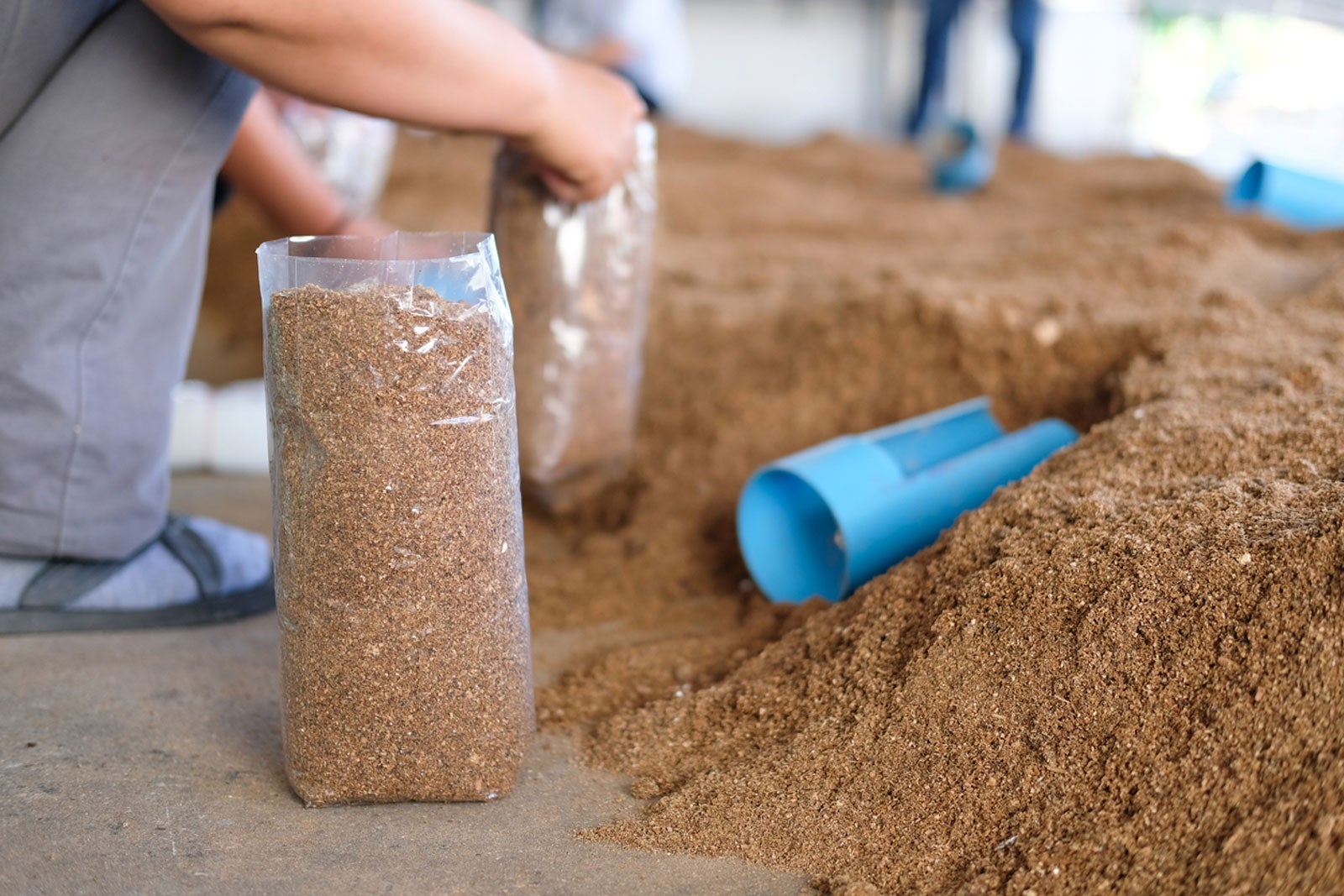Reap the Benefits of Spent Mushroom Compost for Your Garden
As an avid gardener, I’m always on the lookout for ways to improve my soil and help my plants thrive. One amendment I’ve come to rely on is spent mushroom compost. This recycled byproduct of commercial mushroom farming makes an excellent addition to garden beds and containers.
If you aren’t familiar with it, spent mushroom compost (SMC) refers to the leftover growing medium once mushrooms have been harvested It’s composed of a mixture of materials like straw, peat moss, manure, gypsum and other nutrients Although it’s been “spent” in mushroom cultivation, SMC still contains lots of organic matter and plant foods that can enhance your soil.
The best part is that this natural soil conditioner is widely available for purchase. Keep reading to learn why you should consider using spent mushroom compost and where to source it for your own garden.
Benefits of Using Spent Mushroom Compost
There are many advantages to incorporating spent mushroom compost into your garden soil or potting mixes:
-
Improves soil structure – The high organic content increases beneficial aggregation and porosity. This creates a better environment for roots and helpful soil organisms.
-
Holds moisture – The organic matter acts like a sponge to retain water, This reduces drought stress for plants
-
Supplies nutrients – SMC contains nitrogen, potassium, phosphorus and micronutrients to feed plants over time.
-
Increases microbial activity – The compost introduces beneficial bacteria and fungi that keep the soil ecology in balance.
-
Prevents soil compaction – The organic bulk resists compression and improves aeration.
-
Adjusts pH – The near neutral pH of SMC can help buffer overly acidic or alkaline garden soils.
-
Degrades slowly – The stable humus releases nutrients gradually as it decomposes. The effects last for several seasons.
-
Weed free – Commercial SMC undergoes heat treatment to kill seeds and pathogens. This reduces weeds and disease.
-
Safe for all plants – SMC can be used on flowers, vegetables, trees, shrubs and turf without risk of burn.
With all these perks, it’s easy to see why spent mushroom compost earns rave reviews from gardeners. The bottom line is it makes an excellent all-natural amendment to enhance the health and productivity of your soil.
Where to Source Spent Mushroom Compost
Since it’s a recycled waste product of the mushroom industry, sourcing spent compost typically involves connecting with a local mushroom farm or commercial grower. Here are some options to find and purchase SMC in your area:
-
Check online – Many mushroom farms sell compost directly through their websites. Search for mushroom growers in your state or region.
-
Visit farm stores – Some mushroom operations have on-site farm stores that stock compost. These are great places to buy in bulk.
-
Contact suppliers – Landscapers, nurseries and soil companies often buy SMC wholesale and resell it to homeowners.
-
Check gardening centers – Some independent garden centers purchase compost in bulk bags or by the yard.
-
Look for ads – Mushroom farms sometimes advertise compost for sale online or in local papers and magazines.
-
Attend festivals – Events like mushroom fairs are good spots to find vendors selling fresh local compost.
-
Join co-ops – Some community gardens or urban farms buy SMC in bulk and split it amongst members.
With a bit of digging, you should be able to find a source for spent mushroom compost in your area. It’s sometimes sold by the bag or 5-gallon bucket. For large quantities, bulk pricing by the yard or truckload is typical.
I recommend sampling from a few local producers if possible to compare quality. Look for compost with a fine, crumbly texture and rich earthy smell. Avoid piles with chemical odors or those containing large undecomposed clumps. High-quality SMC with ample organic matter will work best to amend garden soil.
Using Spent Mushroom Compost in Your Garden
Spent mushroom compost can be used in a few different ways around your garden:
-
Soil amendment – Mix 1-3 inches into beds before planting. For pots, use up to 20% compost in your potting soil.
-
Mulch – Topdress beds with a 2-3 inch layer to conserve moisture and suppress weeds. Reapply yearly.
-
Compost activator – Blend with home compost piles to introduce microbes and speed decomposition.
-
Lawn topdressing – Apply a thin layer over grass to add nutrients and stimulate soil biology.
-
Seed starter – Combine with coir or peat as an alternative to commercial seed starting mix.
-
Potted plants – Add some to potting soil to improve moisture retention and aeration.
Adjust amounts based on your soil needs. To avoid compressed roots, don’t work more than 3 inches of spent compost into beds at a time. Instead, build up your soil over seasons by topdressing and then incorporating the new layers.
With proper sourcing and application, spent mushroom compost can vastly enhance soil health in gardens and landscapes. Find a local supplier and try this organic gold for yourself! Your plants will flourish with this recycled soil amendment.
Is Mushroom Compost Good For A Garden Or Should You Avoid It?
FAQ
When should you not use mushroom compost?
What are the disadvantages of mushroom compost?
What is spent mushroom compost good for?
What plants do not like mushroom compost?
- The Ultimate Guide to Growing Strawberries in Raised Beds - August 8, 2025
- No-Dig Garden Beds: The Easiest Way to Grow a Beautiful Garden - August 6, 2025
- How to Protect and Preserve Wood for Raised Garden Beds - August 6, 2025

